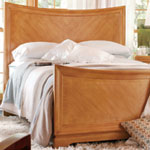The vowels are "a,e,i,o, and u"; also sometimes "y" & "w". This also includes the diphthongs "oi,oy,ou,ow,au,aw, oo" and many others. The consonants are all the other letters which stop or limit the flow of air from the throat in speech. They are: "b,c,d,f,g,h,j,k,l,m,n,p,qu,r,s,t,v,w,x,y,z,ch,sh,th,ph,wh, ng, and gh".
1. Sometimes the rules don't work. There are many exceptions in English because of the vastness of the language and the many languages from which it has borrowed. The rules do work however, in the majority of the words.
2. Every syllable in every word must have a vowel. English is a "vocal" language; Every word must have a vowel.
3. "C" followed by "e, i or y" usually has the soft sound of "s". Examples: "cyst", "central", and "city".
4. "G" followed by "e, i or y" usually has the soft sound of "j". Example: "gem", "gym", and "gist".
5. When 2 consonants a joined together and form one new sound, they are a consonant digraph. They count as one sound and one letter and are never separated. Examples: "ch,sh,th,ph and wh".
6. When a syllable ends in a consonant and has only one vowel, that vowel is short. Examples: "fat, bed, fish, spot, luck".
7. When a syllable ends in a silent "e", the silent "e" is a signal that the vowel in front of it is long. Examples: "make, gene, kite, rope, and use".
8. When a syllable has 2 vowels together, the first vowel is usually long and the second is silent. Examples: "pain, eat, boat, res/cue, say, grow". NOTE: Diphthongs don't follow this rule; In a diphthong, the vowels blend together to create a single new sound. The diphthongs are: "oi,oy,ou,ow,au,aw, oo" and many others.
9. When a syllable ends in any vowel and is the only vowel, that vowel is usually long. Examples: "pa/per, me, I, o/pen, u/nit, and my".
10. When a vowel is followed by an "r" in the same syllable, that vowel is "r-controlled". It is not long nor short. "R-controlled "er,ir,and ur" often sound the same (like "er"). Examples: "term, sir, fir, fur, far, for, su/gar, or/der". 
Different writing systems require different reading skillsUnlike speech, which evolved over thousands of years, writing was invented, and many different writing systems have been invented in different parts of the world at different times in history. Some, like the traditional Chinese writing system, represent a whole word with a single symbol - writing systems like these are called logographies (Sometimes they are mistakenly called idiographies, but in an idiographic writing system, symbols represent ideas, not words - there is no known idiographic writing system in the world, although many primitive writing systems such as Mixtec do use a mix of logographs and idiographs.)
Logographic and syllabic writing systemsTo learn to read in a logography, students must memorize the whole symbol for each new word they learn to read. This is an overwhelming challenge for literate adults because there is no theoretical limit on how many words can exist in a language, but there is a practical limit as to how many symbols we can learn (some say about 5,000 in isolation - although with contextual cues, it is possible to recognize a few thousand more). Estimates of educated adult vocabularies suggest that an adult knows between 50,000 and 75,000 words. Moreover, it is extremely taxing for a person to memorize and discriminate among the thousands of symbols that exist in a written language. Reading in a logographic system is often slow and laborious, and learning to read a logography is a lifetime endeavor. In short, logographies are somewhat inefficient, and because of this, they are being replaced by other writing systems.
Other writing systems represent word parts with symbols rather than representing whole words with symbols. For example, in the American Cherokee writing system (invented by Sequoya in the early 19th century), each syllable in the language is represented by a unique symbol, and those symbols are combined to make words (hence, they are called syllabaries). This is more efficient than a logography, because in any language, there are fewer syllables than words. The Cherokee language is even more suited for a syllabary than most languages because there are only about 65 unique syllables in the Cherokee language, and words in Cherokee typically follow an alternating vowel-consonant structure (VCVCV).
Alphabetic writing systemsMost languages of the world, however, like English, Spanish, French, German, Russian, etc., contain considerably more than 65 unique syllables, and the syllables do not follow a regular vowel-consonant pattern (consider the word strengths which only has one vowel). In these languages, it is more efficient to use a symbol to represent the phoneme, and to assemble written words at the phonemic level. English, which has thousands of unique syllables, only contains between 39 and 47 phonemes (the larger number includes diphthongs and glides as separate phonemes). Assembling words at the phoneme level is considerably more flexible, generative, and efficient than attempting to maintain a lexicon of symbols to represent either syllables or words, so it should come as no surprise that this writing system is the most universal writing system across languages.
The writing systems that use a symbol to represent a phoneme are called alphabetic writing systems, and while alphabetic writing systems are relatively efficient and easy to learn, they do vary in complexity. Consider English and Spanish as examples. In Spanish, there is nearly perfect one-to-one correspondence between the letters and the phonemes. In general, words in Spanish are spelled the way they sound - this is what linguists call a "shallow orthography." English, on the other hand, definitely does not have one-to-one correspondence between letters and phonemes. Many words in English are "irregular" or "exception" words, and are not spelled the way they sound. English, therefore, is an example of a "deep orthography."
In English, there are only two letters that always represent the same sound - the letter V always corresponds to the sound /v/ and the letter /q/ always corresponds to the sound /k/. Even in this case, however, the reverse is not true; the sound /v/ can be represented by either the letter V or the letter F (as in the word OF), and the sound /k/ can be represented by the letters C, Q, and K. This inconsistency between letters and sounds in English results in spelling ambiguity. Many words in English are "polyphonic," meaning there are multiple pronunciations for the same spelling ("If you turn your boat across the WIND, you will WIND up swimming ashore."); many other words are homophonic, meaning that, despite different spellings, they are pronounced the same ("It is a RITE of passage for children to learn to WRITE RIGHT"). Pollack Pickeraz (1963) argued that there are 45 phonemes in the English language, and that the 26 letters in English can represent the 45 phonemes in about 350 ways.
What all of this means is that there is no certain code for spelling in English - most of the time, if two words are spelled similarly, they are pronounced similarly (LONE, PHONE, BONE, TONE, CONE, ZONE, SHONE, STONE, SCONE), but there are almost always exceptions (ONE, DONE, NONE). In Spanish, if two words rhyme, they are spelled similarly, and if two words are spelled similarly, they sound alike, but in English, on average, that is only true slightly more than half the time, and in some extreme instances, the orthography is so deep, the exceptions are in the majority (TOUGH, PLOUGH, THROUGH, THOUGH, COUGH, THOUGHT).
This poses a problem for the teacher trying to help children to learn to read English text. One of the oldest questions facing teachers is to what extent, if any, children should be explicitly taught the rules of English pronunciation, given that there are exceptions to every rule. There might be less of a debate if letters always represented the same phonemes, but in English, there is very little consistency. The consistency is enhanced if the rules describe the whole word, rather than just the mapping between individual letters and phonemes (i.e. rather than saying A is always pronounced /a/, which is obviously untrue, some teachers have adopted more global rules that describe the context in which the letters are to be found, such as "an E at the end of the word is usually silent, and its presence makes the first vowel long."). These more global rules are, unfortunately, only marginally more universal, and they start to become so abstract and contrived, one wonders how useful they are for children learning to read. For example, "The vowels I and O MAY be long if followed by two consonants, e.g. FOLD or FIND." In addition to being difficult to parse, this rule is not very universal - it is just as likely, if not more likely, that any vowel - I or O or any other vowel - followed by two consonants will be short, as in PAST, RENT, TILT, ROCK, and RUST; ultimately, then, children who are taught this rule must learn that a vowel followed by two consonants is either long or short. This is called a tautology, and while it is true (all tautologies are true), it is not a particularly useful aid for the child learning to read.
Furthermore, given the complexities of these rules, one wonders if this is really how we read. Most people are unaware that "when two vowels go a-walkin', the first does the talkin,'" and yet their ignorance of this common decoding rule does not seem to affect their decoding skills in any way. In running text, we read over 240 words per minute - that's over 4 words per second - this efficient decoding system is clearly mediated by the letters of the words, but is there any mediation of the various phonics rules? For skilled readers, the answer is obviously, no; there is not enough time, and examining the rules is far too inefficient. Why, then, do we teach children to read the inefficient way.
It is clear that children need to be explicitly taught letter-sound relationships, and they need to learn to sound out words. All good readers process words at the letter level, so children need to be taught to pay attention to all of the letters in the word, and to sound out words they do not know. Can this be achieved by teaching children abstract rules like "when a suffix is attached to a word, and the final consonant is doubled, the vowel remains short?" It seems unlikely.
Another weakness of these rules is that skilled readers clearly don't follow these rules as stated. If they did, they would not be able to pronounce pseudowords like FINT, KINT, ZINT, DOLD, VOLD, and POLD. There are apparently two conflicting rules here -- sometimes the vowel is long, sometimes it is short. Which do you apply with new words like the ones I just listed? The first three pseudowords have a short vowel. The second three have a long vowel. Why aren't you confused about how to pronounce these words given that the rule seems ambiguous?
It seems clear that skilled readers do not explicitly consult rules to generate a pronunciation for a novel word. It seems instead that skilled readers depend on analogy - they implicitly compare the novel word against known words. No word in English, other than PINT, ends in INT and has a long vowel, so it is a safe bet that pseudowords like KINT also do not have long vowels. Many words do end in VCC and do have a long vowel, but in the case of INT, you are not even tempted to apply that rule. Likewise, many words end in VCC and have a short vowel, but in the case of OLD, you are not tempted to apply that rule either (POLD doesn't rhyme with PALLED). Now consider ONT - there are very few words in English that end in ONT. You have very little to generate analogies from, so it is not surprising that you are not so positive about how to pronounce pseudowords like BONT, SONT, or TONT. They might have short vowels, they might have long - in the absence of other words to compare them to, either interpretation is acceptable.
Returning to the question about what we teach children, children clearly need to be taught that there is some consistency between the letters and the sounds, but that consistency is somewhat limited. For example, the single letter A can represent four different sounds (HAT, HATE, ABOUT, HALT), and when combined with other vowels, it can represent two more sounds (HEAT and HAUTE). There are a host of sounds that the letter A can not represent (/t/ /s/ /f/, etcÉ), and of the sounds the letter A can represent, there are some it represents more than others (The French sound used in HAUTE is very rare. The sounds used in HAT and HATE are more common.). Children should just learn the regularities and consistencies, and deal with the exceptions as they arise. If mature readers read new words by comparing their internal structure to known words (reading by analogy), children need to be taught similarities between words, and they should be encouraged to build words and to explore word families, and an exploration of word families should explicitly deal with "black sheep" - words that seem to be part of the family, but which are pronounced differently. Words like DOVE will always present problems, and no rule will alleviate those problems. Teachers and children just need to deal with the difficult words as they arise on an individual basis.
Arguably the greatest weakness of phonics instruction is its dependence on explicit instruction of feeble and abstract rules. Pat Cunningham, in the introduction to her book, "Phonics They Use," draws a distinction between the attempts to explain our writing system (rules), and what good readers actually do when they come across an unfamiliar word. She argues that teachers can teach the rules, or they can teach strategies for solving problems. She notes that children often learn the rules and then fail to apply them when they are supposed to - teachers are often exasperated that a student who is able to recite the rules and apply the principles in exercises is not able to apply those principles when they are reading difficult text. Teachers need to understand that it is one thing to be able to explain a writing system, and it is something entirely different to be able to read.
-- by Sebastian Wren



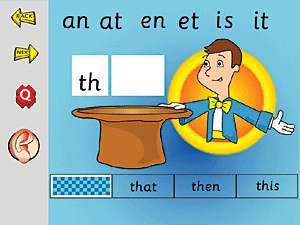










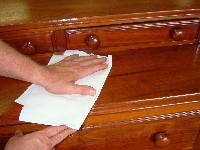
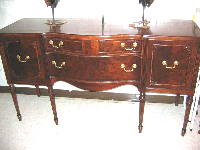


 I think that the furniture outlet shop is an ideal place to find slightly damaged new furniture, because these items are priced so low.
I think that the furniture outlet shop is an ideal place to find slightly damaged new furniture, because these items are priced so low.


 I think that Bombay furniture are applied to a rather extensive class of furniture pieces originally manufactured in the city of Bombay.
I think that Bombay furniture are applied to a rather extensive class of furniture pieces originally manufactured in the city of Bombay.

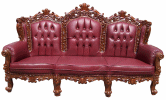
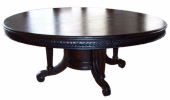



 When selecting dining sets for a restaurant, you have several options to help you match your environment. Tables are available in stainless steel with different surfaces, such as smooth or a non-glare hologram effect, or teak. Round, square or rectangular tables range from 24" wide to 42". And there are several bar height tables too. Table bases are constructed of anodized tubular aluminum and are totally water resistant.
When selecting dining sets for a restaurant, you have several options to help you match your environment. Tables are available in stainless steel with different surfaces, such as smooth or a non-glare hologram effect, or teak. Round, square or rectangular tables range from 24" wide to 42". And there are several bar height tables too. Table bases are constructed of anodized tubular aluminum and are totally water resistant.



 materials including wood and metal, we also carry pieces that come in several different styles and types including those which would fit in well at a pub. Tables and bar stools that have that pub look are extremely popular, especially amongst people who want to incorporate a fun and eclectic decorative scheme into their homes. These pieces are great for game and entertainment rooms, and even work well as an alternative dining set in the kitchen or dining room. You often have the opportunity to acquire a bar pub table that is separate from the pub table bar stools or you can also often be purchased as a set. Either way their durable and stylish construction makes these pieces a welcome addition to just about any environment.
materials including wood and metal, we also carry pieces that come in several different styles and types including those which would fit in well at a pub. Tables and bar stools that have that pub look are extremely popular, especially amongst people who want to incorporate a fun and eclectic decorative scheme into their homes. These pieces are great for game and entertainment rooms, and even work well as an alternative dining set in the kitchen or dining room. You often have the opportunity to acquire a bar pub table that is separate from the pub table bar stools or you can also often be purchased as a set. Either way their durable and stylish construction makes these pieces a welcome addition to just about any environment.
